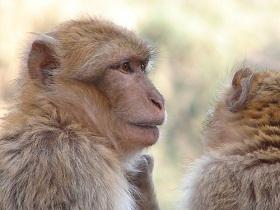Using AI to control energy for indoor agriculture
30 September 2024
Published online 15 May 2013

Millions of people become infected with the hepatitis B virus every year and half a million die as a result. The virus (HBV), which can cause liver cancer, continues to defy vaccines and resists current anti-HBV therapies1,2.
The search for new anti-HBV therapies has been thwarted by a lack of animal models of HBV infection. Chimpanzees and other great apes, while providing suitable animal models, are protected from this kind of research.
But an international research team scouring wild habitats in Morocco, Mauritius Island, China, Indonesia and the Philippines, has detected the first naturally occurring HBV infection in wild macaques (Macaca fascicularis) living in Mauritius Island.
The discovery, reported in Hepatology3 negates the ethical problem of infecting healthy simians with the disease in order to study its response to treatment.
"This can provide a novel, readily accessible small simian model of chronic HBV infection, particularly valuable for the study of new immunotherapeutic approaches against chronic hepatitis B," says Isabelle Chemin who leads a team of researchers from France, Morocco and Japan.
The researchers sequenced the DNA of the HBV carried by the macaques from Mauritius Island and found that it closely resembles a specific strain of human HBV (genotype D) found in India, Asia, Europe and North America. In an eight-month follow-up, modest HBV infection symptoms were observed in the captive Mauritius macaques. In addition, the Mauritius macaque HBV was transferrable; infecting macaques (Macaca sylvanus) from Morocco who developed acute HBV.
"A non-human primate animal model for HBV infection will be very useful," says Wenhui Li from the National Institute of Biological Sciences, Beijing. "This research may offer new insights, paving the development of a more robust monkey model for human HBV infection."
The discovery is potentially significant for the Arab-speaking world. In countries like Iraq and the United Arab Emirates, where vaccine reaches 60-70% of populations, HBV is carried by 2-5% of the population. However, it is endemic in countries like Egypt, Jordan, Oman, Occupied Palestinian Territories, Yemen and Saudi Arabia where HBV carrier rates range from 2% to 18.5%.
There is almost 99% similarity between the genome of the Mauritius macaque HBV and the genotype D strain of human HBV, Chemin says, which suggests a possible zoonosis – transmission of disease from animals to humans or vice-versa.
"The Mauritius macaque HBV may have originated from Portuguese sailors who captured and imported the macaques during their journey from Java to Mauritius Island about 400 years ago," says Chemin.
In such close proximity the human HBV may have jumped to captive macaques from the infected sailors. From a group of 15 macaques, they bred in isolation in Mauritius Island, harbouring the HBV infection over nearly 100 generations.
"Although it is far from conclusive whether these isolated HBV-harbouring macaques pose a threat of HBV infection to humans who come in contact with them, an understanding of HBV evolution in humans could greatly benefit from better knowledge of its predecessor, simian HBV in non-human primates," says Chemin.
doi:10.1038/nmiddleeast.2013.72
Stay connected: